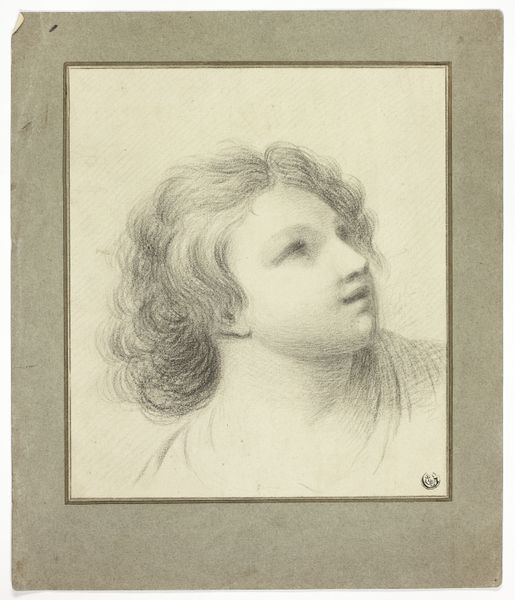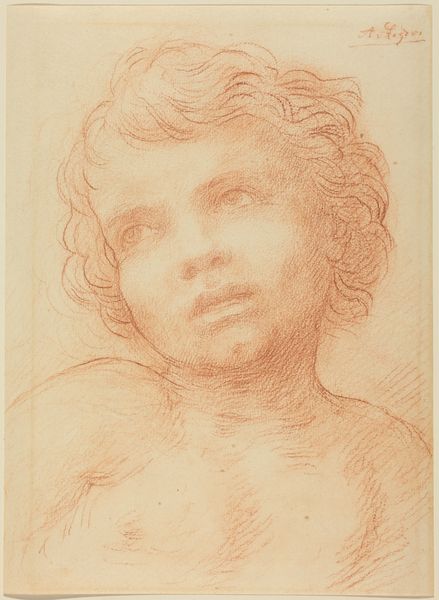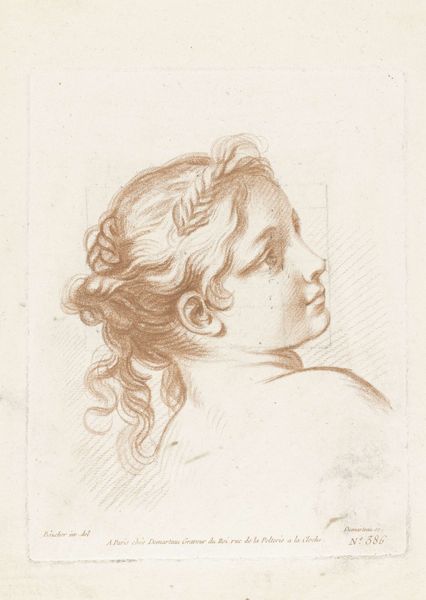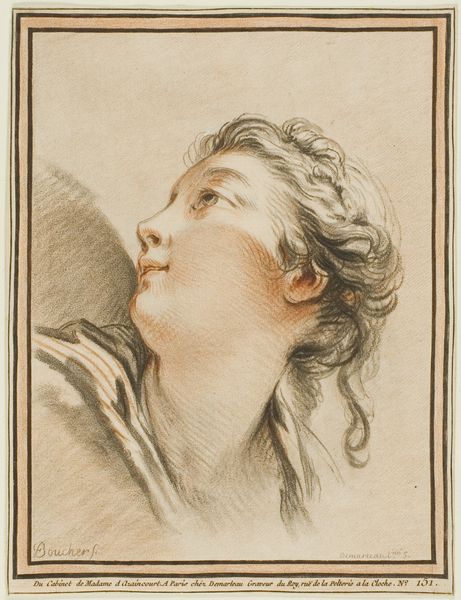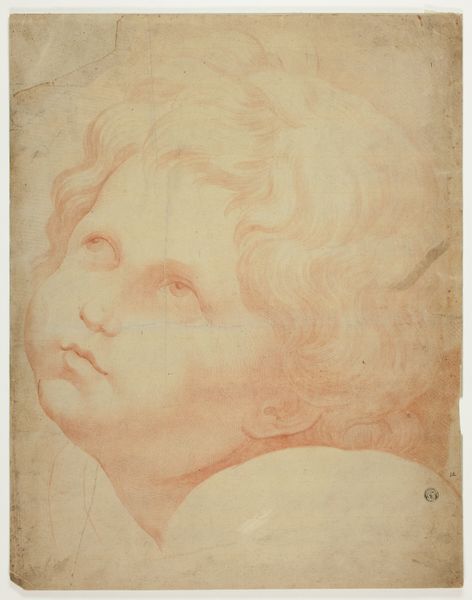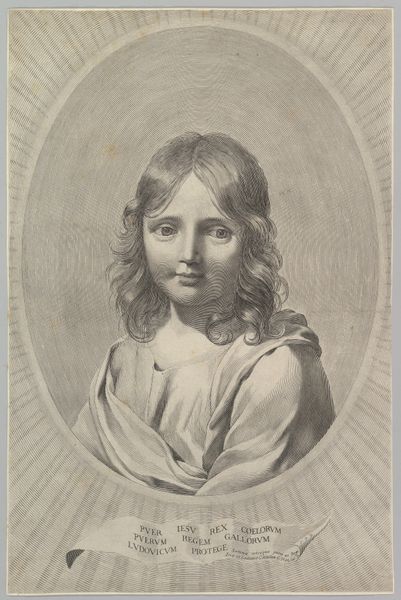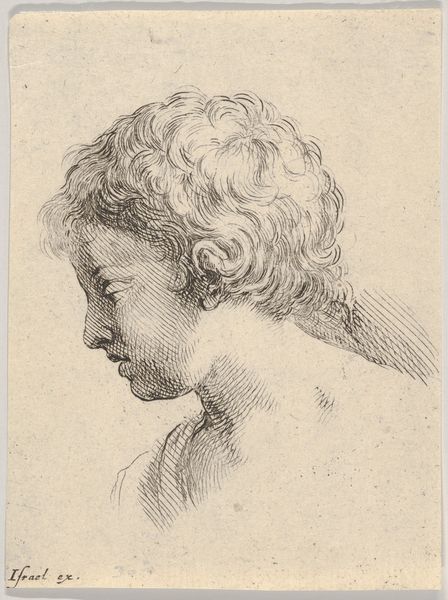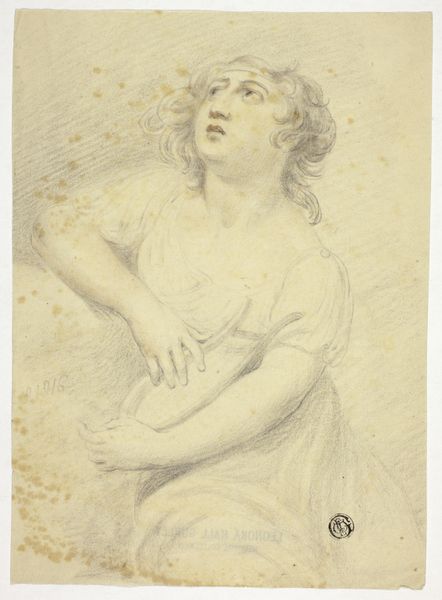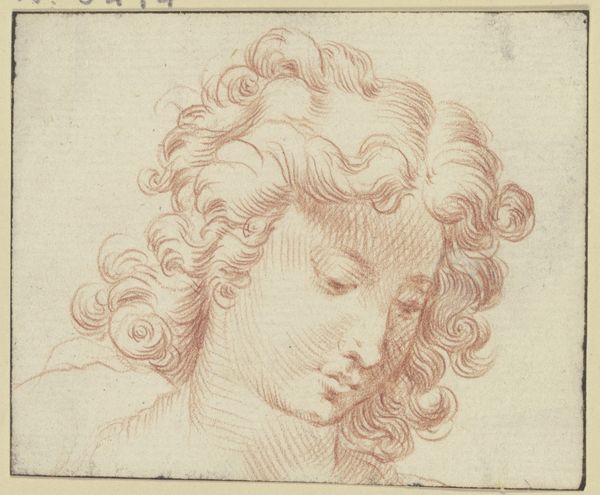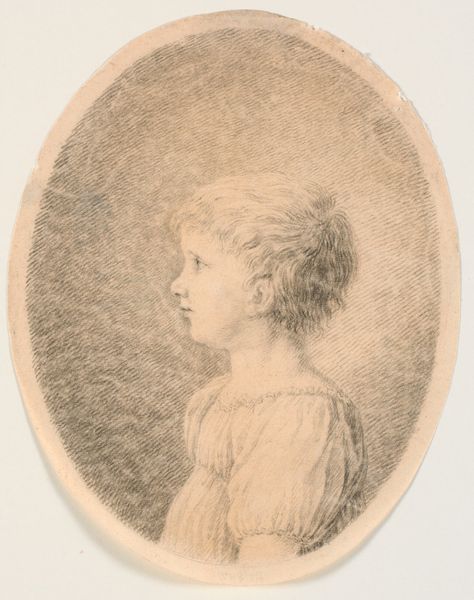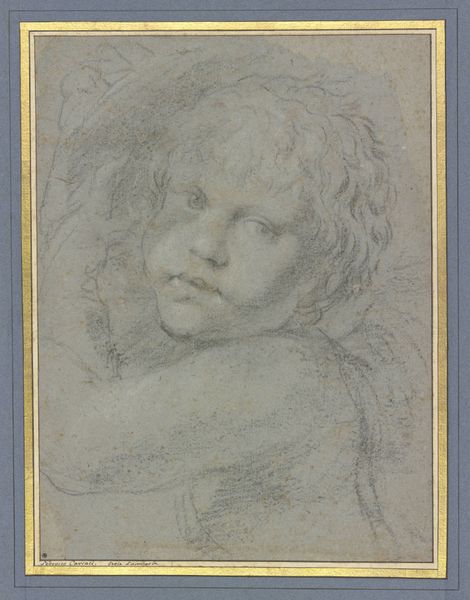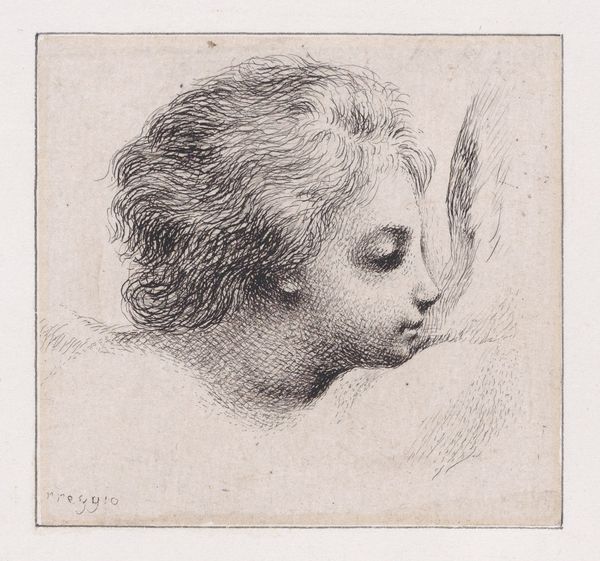
Dimensions: Sheet (trimmed): 7 1/2 × 5 1/2 in. (19 × 14 cm)
Copyright: Public Domain
Louis Marin Bonnet made this sanguine drawing called "Head of an Angel or Child" sometime in the late 1700s. Sanguine refers to the red chalk that he used, a naturally occurring pigment prized by artists for its warm, lifelike quality. Look closely, and you'll see how Bonnet varies the pressure of his strokes. In areas like the hair and background, the chalk is lightly applied, creating soft, hazy textures. In the face, he presses harder, defining the contours and capturing the child's delicate features. Notice how the red chalk creates a sense of depth and volume, almost as if the figure is emerging from the paper. Drawings like these were not only valued as works of art but also as teaching tools. By mastering the art of drawing, artists could hone their skills in observation, composition, and the representation of the human form, all essential for success in painting and sculpture. Appreciating the artistry and technique involved in this sanguine drawing allows us to move beyond traditional distinctions of craft and fine art.
Comments
No comments
Be the first to comment and join the conversation on the ultimate creative platform.
